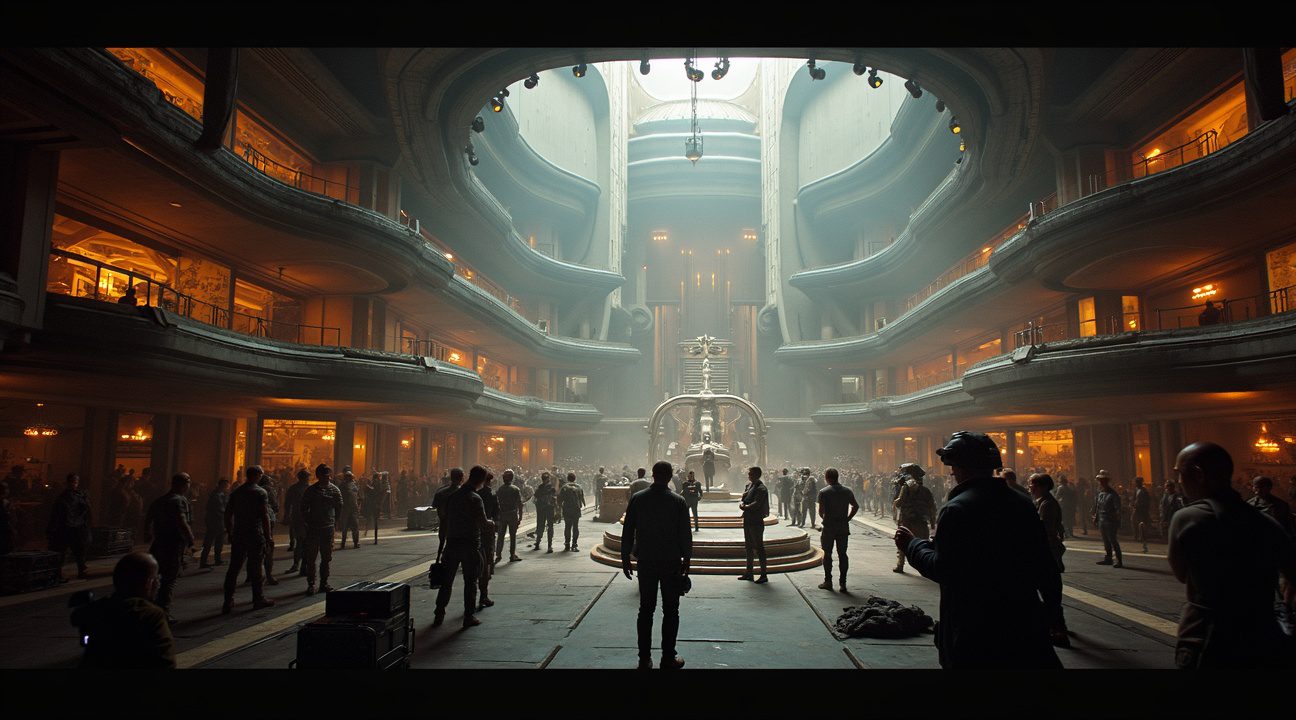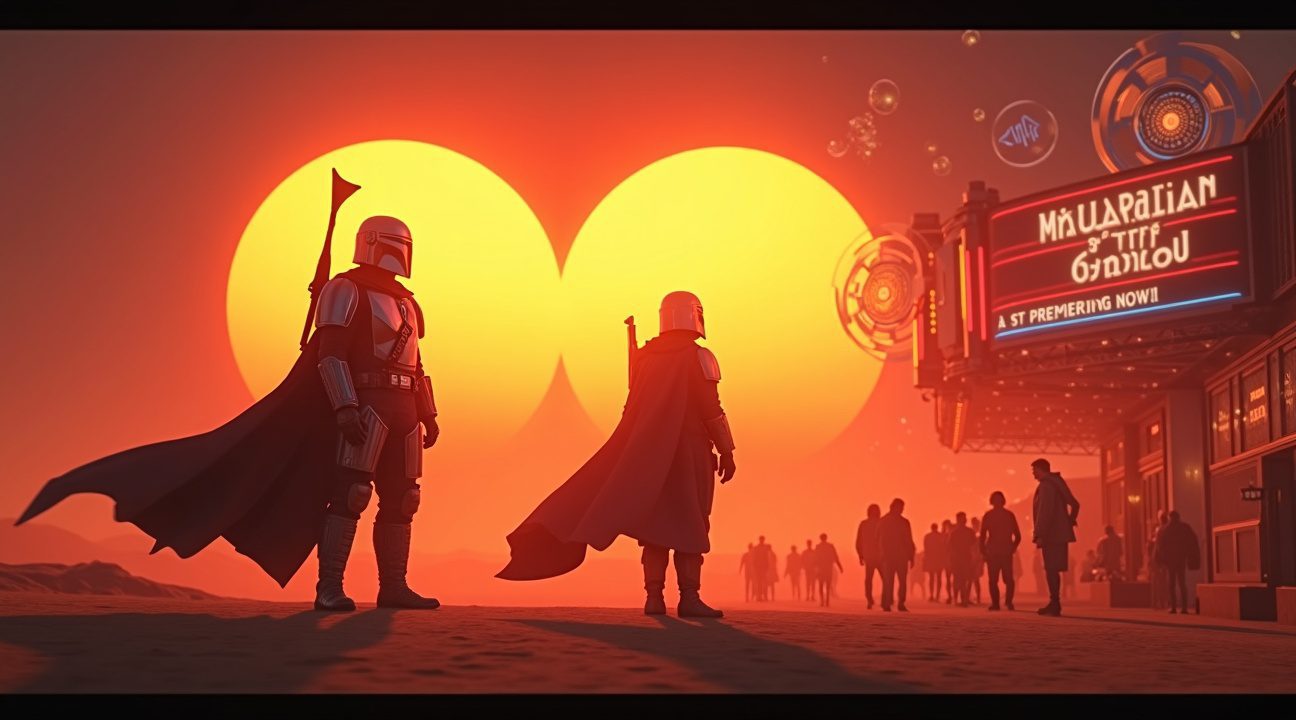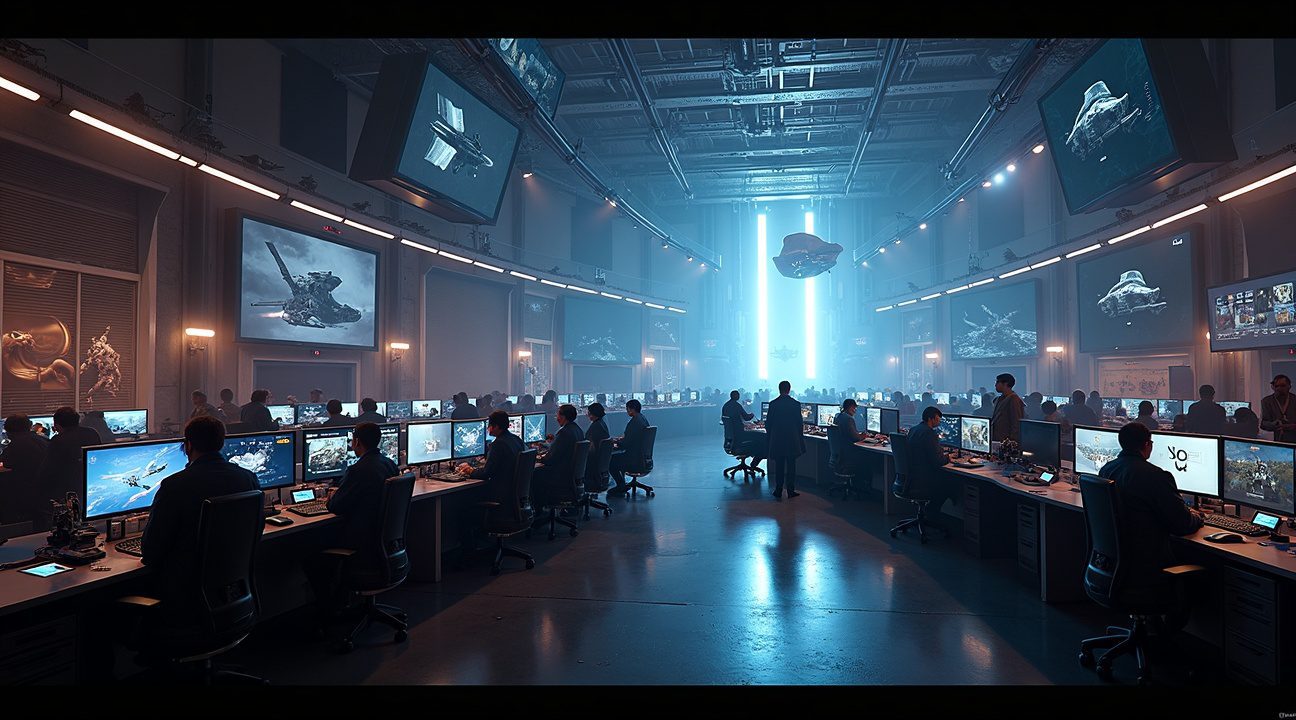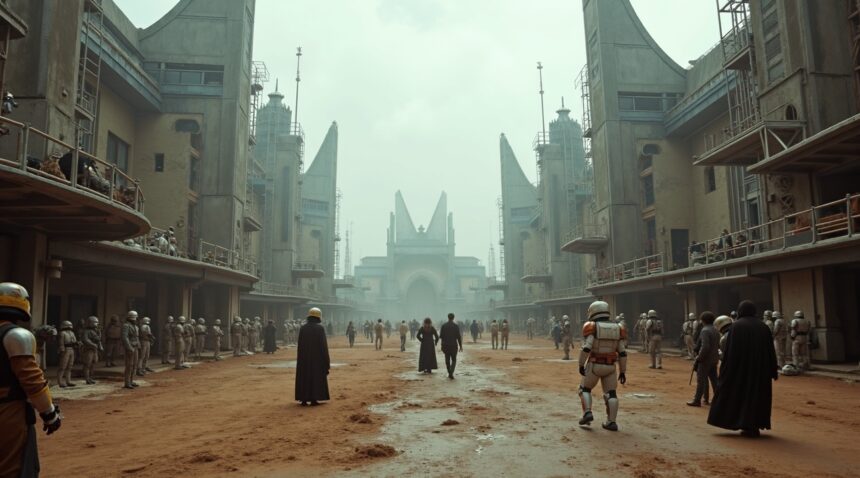Disney’s record-breaking $705.5 million investment in the two seasons of Andor, revealed in UK production company filings, marks the most expensive television production in history, eclipsing even the budgets of any Star Wars films ever made.
Key Takeaways
- Disney invested $705.5 million across both seasons of Andor, reducing the net cost to $552.4 million after leveraging UK tax credits and incentives totaling $142.3 million.
- With an average of $26.9 million per episode, Andor sits among the most expensive TV productions ever, exceeding the per-episode cost of many Hollywood blockbusters.
- The 2023 Hollywood strikes caused significant production delays, increased labor costs, and likely pushed final expenses beyond the already staggering $705.5 million figure.
- Disney secured its largest UK tax rebate ever for a production, employing an average of 501 workers monthly and incurring $85.5 million in payroll expenses.
- The scale of this investment has led Disney to reconsider its streaming strategy, with a strategic pivot towards theatrical releases—evidenced by plans to convert season four of The Mandalorian into a feature film to capitalize on box office revenue.
Conclusion
While Andor’s cinematic production values and storytelling ambitions have been widely praised, Disney’s historic spend raises ongoing concerns about sustainability in the rapidly changing streaming industry. The company’s evolving strategy highlights a significant rebalancing between streaming ambitions and traditional box office models as it charts the future of its Star Wars universe.
Disney’s $705.5 Million Star Wars Gamble: Breaking Down Andor’s Record-Shattering Budget
Disney invested an unprecedented $705.5 million across both seasons of Andor, according to financial filings from E&E Industries, the UK-based production company managing the series. This astronomical figure establishes new benchmarks for television production costs and surpasses the budget of every Star Wars film ever made.
Breaking Down the Numbers
The financial breakdown reveals the massive scale of this investment. Season two alone cost $60.5 million in 2024, contributing to the combined total of $705.5 million across both seasons. After factoring in tax credits and reimbursements, Disney’s net production cost settled at approximately $552.4 million.
These figures dwarf previous Star Wars film budgets, including The Rise of Skywalker at $275 million and The Last Jedi at $280.7 million. The series demonstrates Disney’s commitment to premium content production, though it raises questions about streaming profitability in an environment where Disney Plus continues increasing subscription prices to offset rising content costs.
Per-Episode Investment Analysis
When distributed across 24 episodes, Andor‘s average episode cost reaches $26.9 million. This per-episode budget rivals major Hollywood blockbusters and positions the series among the most expensive television productions ever created. Each episode essentially commands the budget of a mid-range theatrical film.
The investment reflects Disney’s strategy to differentiate its streaming content through production values that match or exceed theatrical releases. Lucasfilm’s approach with Andor emphasizes:
- Practical effects
- Elaborate set construction
- Extensive location shooting
All of these aspects contribute to the elevated costs.
However, the financial commitment raises critical questions about return on investment for streaming content. Unlike theatrical releases that generate immediate box office revenue, streaming series rely on:
- Subscriber acquisition
- Subscriber retention
to justify their costs. The series must attract enough new subscribers and prevent cancellations to offset its massive production budget.
This spending pattern indicates Disney’s willingness to treat streaming content as premium entertainment rather than cost-effective alternatives to theatrical releases. The company appears focused on creating appointment television that generates cultural conversation and maintains subscriber engagement over multiple years.
E&E Industries’ financial filings provide transparency into production costs that streaming companies typically keep confidential. The disclosed figures offer rare insight into the true cost of high-end streaming content and demonstrate the increasing convergence between television and film production budgets in the streaming era.

How Andor’s Per-Episode Costs Compare to Hollywood’s Biggest Productions
At $26.9 million per episode, Andor stands as one of television’s most expensive productions in history. This staggering figure places the Star Wars series in rarefied air, even among the high-budget streaming content that has become Disney’s trademark approach to premium entertainment.
Breaking Down the Competition
When examining other major streaming productions, Andor‘s costs become even more striking. Consider these comparisons that reveal just how much Disney invested in the Cassian Andor story:
- Marvel’s Secret Invasion carried a total budget of $224.3 million across its entire six-episode run
- Loki Season 2 required $167.1 million for its complete second season
- Most premium streaming series typically range between $10-20 million per episode for their highest-budget productions
The gap between Andor and its closest competitors is substantial. Secret Invasion, despite featuring major Marvel characters and extensive visual effects, spent roughly $37.4 million per episode. Loki Season 2, with its multiverse storylines and complex production requirements, averaged approximately $27.8 million per episode. However, Andor‘s $26.9 million per episode still positions it among the highest per-episode costs ever recorded for television production.
This level of investment reflects Disney’s commitment to delivering cinematic quality for their streaming platforms. The production values evident in Andor‘s practical sets, locations, and attention to detail justify much of this expense. Rather than relying heavily on digital environments, the series invested in building physical sets and filming in diverse international locations, driving up costs significantly.
The financial commitment becomes more impressive when considering that Andor represents a relatively niche corner of the Star Wars universe. Unlike series featuring iconic characters like Luke Skywalker or Darth Vader, this show focuses on a supporting character from Rogue One, making the investment level particularly bold. Disney’s willingness to spend at this level demonstrates their confidence in premium content as a driver for subscriber retention and acquisition.
Industry analysts point to these production costs as evidence of the streaming wars’ intensity. Platforms continue pushing budgets higher to capture audience attention and critical acclaim. Disney Plus price increases partly reflect these massive content investments, as the company seeks to balance premium programming costs with subscriber revenue.
The success of Andor‘s first season, both critically and among audiences, validates this approach to some degree. However, such high per-episode costs create pressure for exceptional performance metrics. Each episode must deliver value that justifies nearly $27 million in production expenses, a benchmark that few series can realistically meet.
Comparing Andor to traditional network television reveals an even starker contrast. Most broadcast series operate on budgets of $3-8 million per episode, making Andor‘s costs roughly four to nine times higher than typical television production. Even cable premium series rarely exceed $15 million per episode, positioning Andor well above industry standards.
These production costs also highlight the changing economics of television entertainment. Streaming platforms prioritize subscriber engagement and retention over traditional advertising revenue models, allowing for much higher content investments. The bet is that exceptional quality will drive long-term platform loyalty, justifying massive upfront spending.
Looking forward, Andor‘s cost structure sets a precedent that may prove difficult to sustain across multiple series. While Disney can absorb these expenses for flagship Star Wars content, applying similar budgets to every streaming series would quickly become financially unsustainable. The company must balance creating premium content that attracts subscribers while maintaining profitable operations across their streaming portfolio.
The UK’s Massive Tax Incentive Deal That Made Andor Possible
The UK government delivered unprecedented financial support for Disney’s ambitious Andor production, providing $142.3 million in tax breaks and production incentives. This figure represents the largest tax rebate Disney has ever received for a UK-based production, demonstrating the scale and importance of this Star Wars series.
Record-Breaking Payroll Investment
Disney’s financial commitment to Andor extended far beyond typical streaming productions. The show’s payroll expenses reached $85.5 million, marking the highest payroll amount Disney has ever allocated for a UK production. During 2023, the production maintained an average of 501 employees per month, and this number doesn’t include the additional freelancers and contracted labor that contributed to the series.
Strategic Production Partnership
The substantial tax credits offered by the UK created an attractive environment for Disney’s major production investment. These incentives enabled the studio to establish a significant presence in British film and television production while managing the considerable costs associated with high-quality science fiction storytelling. The partnership between Disney and UK production facilities showcased how government incentives can attract major international productions.
The financial structure of this deal reflects broader trends in the entertainment industry, where streaming services are making substantial investments in premium content. As platforms continue to compete for subscriber attention, productions like Andor benefit from generous budgets that allow for extensive practical sets, detailed costumes, and lengthy production schedules. Disney’s willingness to invest heavily in this series, combined with the UK’s supportive tax environment, created ideal conditions for the ambitious scope that fans experienced in both seasons.
The employment figures demonstrate the series’ significant impact on the UK’s creative economy. With over 500 employees working consistently throughout 2023, Andor provided substantial employment opportunities for British film and television professionals. This employment level, excluding additional freelance and contract work, illustrates how major streaming productions can serve as economic engines for local creative industries.
Disney’s record-breaking investment in UK production, supported by these generous tax incentives, signals the company’s commitment to international production partnerships. The success of this arrangement may influence future decisions about where major productions are based, particularly as entertainment companies continue to evaluate their streaming strategies and production costs.

How Hollywood Strikes and Production Delays Inflated Costs
The 2023 Hollywood strikes created unprecedented disruption across the entertainment industry, and Andor wasn’t immune to these costly interruptions. I’ve observed how production shutdowns can cascade into massive budget overruns, and Disney’s Star Wars series exemplifies this phenomenon perfectly.
Strike-Related Production Shutdowns
When both the Writers Guild of America and Screen Actors Guild went on strike in 2023, productions across Hollywood ground to a halt. Andor‘s second season found itself caught in this industry-wide shutdown, forcing Disney to maintain cast and crew contracts while generating zero content. The strikes didn’t just pause production—they created a domino effect of increased expenses that continued long after filming resumed.
Studios typically budget for standard production schedules, but extended delays force companies to renegotiate contracts, extend location rentals, and manage equipment costs that stretch far beyond original timelines. For a high-budget series like Andor, these delays translate into millions of additional dollars in overhead expenses. Disney had to keep key talent under contract during the shutdown period, ensuring actors and essential crew members remained available once production could restart.
Incomplete Financial Picture
The current $705.5 million figure represents only expenses recorded through November 22, 2024, according to Forbes. This incomplete financial snapshot suggests the final production costs will likely climb even higher once Disney accounts for all late-stage expenses. Post-production work, marketing campaigns, and final deliverables often extend months beyond principal photography completion.
I’ve seen how major studios handle accounting for delayed productions, and the financial reporting rarely captures the full scope immediately. Additional costs continue accumulating through final sound mixing, visual effects completion, and marketing material preparation. Disney’s streaming strategy has also evolved significantly, with Disney Plus increasing subscription prices to help offset these escalating production investments.
The timing of the November 2024 cutoff date means several months of potential additional expenses remain unaccounted for in the current total. These might include final visual effects work, international dubbing, promotional materials, and distribution costs across Disney’s global streaming platform. Production companies often discover unexpected expenses during final delivery phases, particularly when dealing with the complex technical requirements of modern streaming platforms.
Strike-related delays also forced Disney to compete in a tighter post-production marketplace once work resumed industry-wide. Visual effects houses and sound studios faced backlogs from multiple delayed productions, potentially driving up costs for services that were previously more readily available. The compressed timeline to complete multiple projects simultaneously created a seller’s market for specialized post-production services.
Hollywood’s 2023 strikes highlighted how interconnected modern television production has become. When one element stops, the entire production ecosystem feels the impact through extended timelines and inflated budgets. For Disney, Andor represents both the creative ambitions of the Star Wars franchise and the harsh financial realities of production in an increasingly complex entertainment landscape.

Disney’s Strategic Shift: From Streaming Series to Theatrical Films
Disney’s monumental $705 million investment in Andor‘s two seasons has prompted a significant reassessment of the company’s streaming strategy. The entertainment giant now pivots away from high-cost streaming productions, choosing instead to channel resources into theatrical releases that promise greater financial returns.
The Mandalorian’s Transformation Sets New Precedent
The company’s decision to convert The Mandalorian‘s fourth season into a theatrical film, titled The Mandalorian & Grogu, exemplifies this strategic realignment. This move represents more than a simple format change—it signals Disney’s recognition that streaming series, despite their popularity, don’t always justify their substantial production costs.
Disney’s executives have identified several compelling reasons for this shift:
- Theatrical releases generate immediate revenue through box office sales
- Films create additional merchandising opportunities and franchise expansion
- Movie theaters provide premium viewing experiences that command higher prices
- International distribution becomes more straightforward with theatrical releases
- Home video and digital sales offer extended revenue streams beyond initial release
The financial reality behind streaming content has become increasingly clear. While Disney+ and Hulu continue raising subscription prices, the platform struggles to recoup massive production investments through monthly fees alone. Andor‘s hefty price tag demonstrates how quickly streaming budgets can spiral beyond sustainable levels.
This strategic pivot doesn’t mean Disney abandons streaming entirely. Instead, the company plans to reduce the number of Star Wars shows produced specifically for Disney+. The focus shifts toward creating fewer, more targeted streaming series while developing theatrical films that can later enhance the platform’s content library.
The Mandalorian & Grogu represents Disney’s confidence in this hybrid approach. The beloved characters already possess proven audience appeal, making the transition from streaming series to theatrical film a calculated risk with substantial upside potential. This film will likely serve as a testing ground for future decisions about which properties deserve theatrical treatment versus streaming exclusivity.
Industry analysts view this shift as Disney’s acknowledgment that streaming profitability requires careful balance between content investment and subscriber growth. The company’s willingness to transform successful streaming properties into theatrical releases suggests a mature understanding of how different distribution channels can maximize franchise value.
The implications extend beyond Star Wars properties. Disney’s entire content strategy now emphasizes theatrical releases as primary revenue drivers, with streaming serving as a secondary platform for extending content lifecycles. This approach allows the company to capture immediate box office revenue while building long-term streaming value through exclusive post-theatrical windows.

What Andor’s Budget Reveals About the Future of Premium Streaming Content
Disney’s $705 million investment in Andor represents a seismic shift in how studios approach premium streaming content production. This astronomical budget surpasses even the most expensive Star Wars films, establishing a new benchmark for what studios are willing to spend on serialized television. The figure demonstrates Disney’s commitment to creating cinema-quality experiences exclusively for their streaming platform, signaling a fundamental change in content strategy.
The budget breakdown reveals production values that rival major Hollywood blockbusters. Andor‘s per-episode cost exceeds many theatrical releases, with elaborate practical sets, extensive location shooting, and high-end visual effects that previously were reserved for big-screen experiences. This financial commitment reflects Disney’s understanding that audiences now expect movie-theater production quality in their living rooms.
Industry-Wide Implications for Streaming Strategy
Andor‘s unprecedented budget has set new expectations across the streaming industry. Competing platforms must now consider whether they can match Disney’s investment levels to remain competitive in the premium content space. Netflix, Amazon Prime Video, and HBO Max face increasing pressure to allocate similar resources to their flagship series.
Several key factors emerge from this budgetary approach:
- Studios are treating streaming series as loss leaders to attract and retain subscribers
- Production costs have shifted from traditional broadcast economics to subscription-based models
- Premium content serves as brand differentiators in an increasingly crowded marketplace
- International co-productions and extended filming schedules become necessary to justify massive investments
This spending pattern suggests streaming platforms view content as long-term assets rather than short-term programming. Disney’s willingness to invest $705 million in a single Star Wars project indicates they’re building content libraries designed to drive subscriber loyalty for years. The strategy acknowledges that premium series generate ongoing value through rewatching, merchandise sales, and brand extension opportunities.
The financial commitment also reveals how streaming platforms are restructuring their content portfolios. Instead of producing numerous lower-budget shows, Disney is concentrating resources on fewer, higher-quality productions. This approach mirrors HBO’s historical strategy but applies it to a much broader subscriber base through Disney+.
The ripple effects extend beyond Disney’s immediate streaming strategy. Disney Plus and Hulu price increases become more understandable when viewed through the lens of these massive content investments. Subscribers ultimately fund these premium productions through monthly subscription fees, creating a direct connection between content quality and platform pricing.
Andor‘s budget also signals a shift in how studios evaluate success metrics. Traditional television relied on advertising revenue and ratings, but streaming platforms measure success through subscriber acquisition, retention rates, and engagement metrics. This change allows for higher upfront investments because the return comes through sustained subscription revenue rather than immediate advertising dollars.
The production approach established by Andor will likely influence future Star Wars projects and Disney’s broader content strategy. The studio has demonstrated that audiences respond positively to high-production-value series, justifying continued investment in premium streaming content. This success could lead to similar budget allocations for other franchise properties within Disney’s portfolio.
Looking ahead, Andor‘s financial model suggests streaming platforms will continue pushing production budgets higher. Competition for subscriber attention drives studios to create increasingly elaborate productions, potentially making $700+ million series budgets the new normal for flagship content. This trend fundamentally alters how the entertainment industry approaches content creation, moving away from traditional broadcast economics toward subscription-based funding models that support much larger creative investments.

Sources:
Forbes
E&E Industries financial filings
What’s On Disney Plus
Screen Rant
Transfer Orbit
Fiction Horizon


